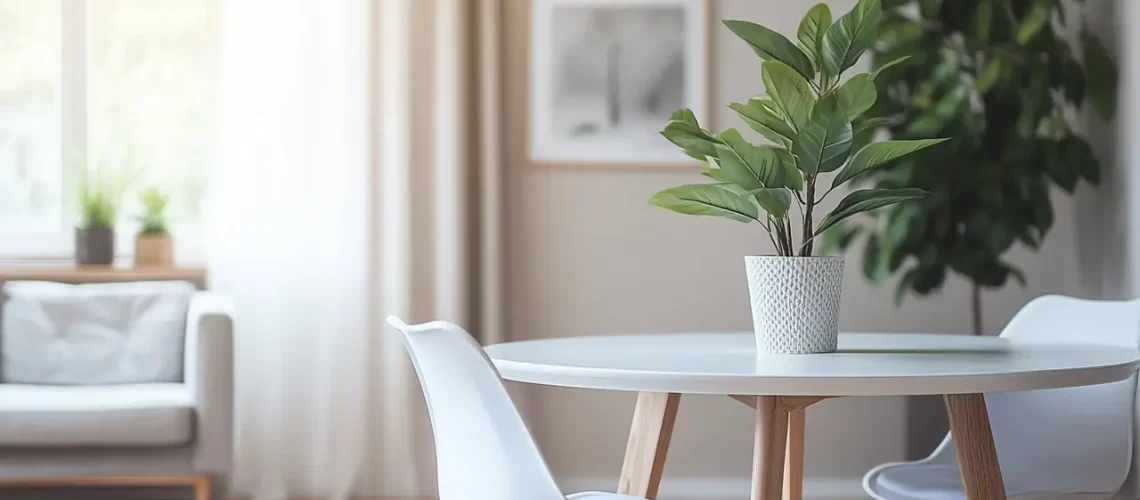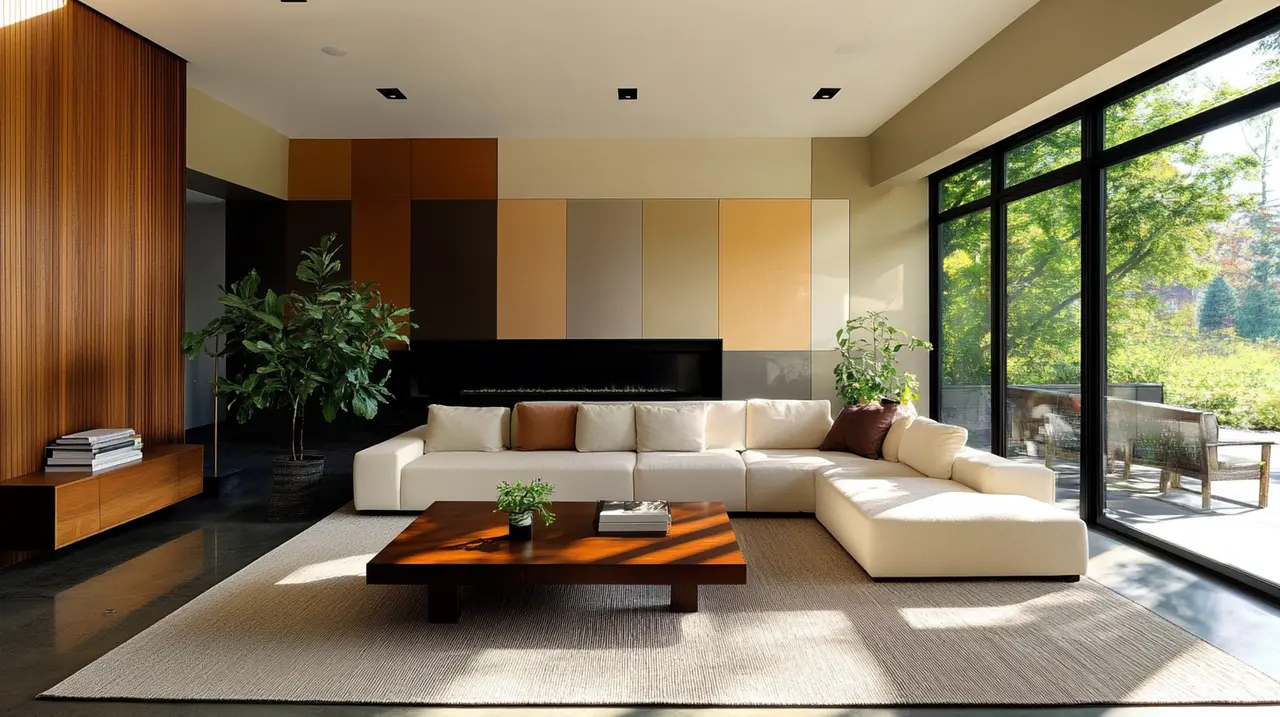Are you looking to declutter your space and embrace a more minimalist lifestyle? Minimalist interior design is not just about having fewer items in your space; it’s about making room for more peace, clarity, and enjoyment in your life. In this blog, we’ll explore the key principles of minimalist design and how you can apply them to transform your space into a serene and stylish retreat.
Understanding Minimalist Interior Design
Minimalist interior design is more than just a visual aesthetic; it’s a deliberate choice to live with less and bring more value into your life. The minimalist design philosophy focuses on simplicity, clean lines, and a monochromatic color palette, allowing the beauty of the items you do choose to have more impact. This design style emphasizes the ‘less is more’ approach, encouraging individuals to cut down on clutter and unnecessary items to make space for what really matters.
At its core, minimalism in interior design is not about stripping away comfort or character but about achieving a balance. It’s about finding beauty in simplicity and creating a home that offers tranquility and peace. Creating a minimalist space means carefully selecting pieces that serve both a purpose and bring joy, allowing yourself to live more intentionally. The goal is to create a thoughtful space that reflects your needs and values without overwhelming your senses or your living area.
The Philosophy Behind Minimalism
Minimalism as a design philosophy is deeply rooted in the idea that by removing the inessential, we can focus more on what adds true value to our lives. It’s a concept that transcends the aesthetic dimension and touches upon the very way we choose to live. Minimalist living encourages mindfulness about our possessions and their impact on our mental and emotional well-being. It seeks to foster environments where each item is selected with intention, promoting a sense of serenity and purpose.
This philosophy highlights the importance of space over objects, urging us to appreciate the beauty and potential of the space itself rather than filling it with things. By adopting a minimalist approach, one aims to simplify their surroundings to simplify their lives, reducing stress and distractions. The minimalist design’s subtle elegance promotes a sense of harmony and order, mirroring the values of its philosophy—understated yet profound.
Key Principles of Minimalist Design
The key principles of minimalist design revolve around simplicity, functionality, and clarity. Each element in a minimalist space is chosen with care, ensuring it serves a purpose while contributing to the overall aesthetic. Minimalism relies on a refined color palette, often gravitating towards neutrals to create a calm, cohesive look. This design aesthetic uses minimal decor, focusing on quality over quantity, and selects furniture with clean lines and simple forms.
Minimalist design is not just about what you can take away, but also what you choose to keep. It’s about striking the perfect balance between what is essential and what is excessive. Space, light, and form play critical roles, with a strong emphasis on uncluttered spaces that promote tranquility and ease of movement. By adhering to these principles, you can create a space that feels both airy and intimate, grounding and uplifting—a testament to the power of less.
Decluttering Your Space: A Step-by-Step Guide
The initial step in adopting minimalist interior design is to declutter your space—a task that might seem daunting at first. Start by categorizing your belongings into what you need, what you love, and what you can let go of. As Marie Kondo suggests, if it doesn’t ‘spark joy’, it’s perhaps time to part ways with it. This process goes beyond physical clutter, allowing you to reassess what’s truly important in your life.
Once you’ve sorted through your items, consider the best way to organize what remains. Minimalism favors open spaces, so think creatively about storage solutions that keep your essentials out of sight but easily within reach. This could mean investing in multi-functional furniture or using vertical space through shelves. Decluttering is not a one-time task but a continuous process of choosing to live with less, making space for more meaningful experiences.
Choosing the Right Furniture and Decor
In minimalist interior design, choosing the right furniture and decor is pivotal. Opt for pieces that are both functional and beautiful, with simple, clean lines that enhance the sense of space. Furniture should not only serve a practical purpose but also contribute to the peaceful and uncluttered feel of your home. When it comes to decor, less is indeed more. Select a few key pieces that truly speak to you and complement the minimalist aesthetic.
Color Schemes for a Minimalist Home
Choosing the right color scheme is essential in creating a minimalist home. Neutral colors like white, beige, and gray are staples in minimalist design because they create a serene and calming environment. These colors also make spaces appear larger and brighter. However, don’t be afraid to add a splash of color through accent pieces—this can add depth and interest to a minimalist space without overwhelming it.
Incorporating Texture and Materials
While minimalist design often features a limited color palette, incorporating different textures and materials can add warmth and variety. Natural materials such as wood, wool, and linen bring an earthy, comforting feel to the space. These textures not only add visual interest but also tactile comfort, making a minimalist home feel cozy and inviting. Pay attention to the nuances of materials, and let them speak for themselves in your space.
Lighting in Minimalist Interior Design
Lighting plays a crucial role in minimalist interior design, affecting both the ambiance and perceived size of the space. Embrace natural light wherever possible to enhance the airy, open feel characteristic of minimalist spaces. For artificial lighting, opt for fixtures with simple designs that complement rather than compete with the rest of the decor. Thoughtful lighting design can elevate a minimalist space, making it feel warm and welcoming.
Maintaining Minimalism: Tips for Everyday Living
Maintaining a minimalist lifestyle goes beyond initial decluttering and design choices; it’s an ongoing commitment to choosing quality over quantity. Regularly evaluate your possessions and be mindful of new acquisitions, asking whether they align with your minimalist values. Embrace a mindful approach to consumption, focusing on the lasting happiness items bring into your life rather than momentary satisfaction. Remember, minimalism is a journey, not a destination.
Embracing Tranquility through Minimalism
Transforming your space with minimalist interior design principles is more than just a redesign; it’s a lifestyle change that promotes simplicity, organization, and calmness. By understanding and applying these principles, you can create a home that reflects a sense of peace and order. Start small, be mindful of what you truly need, and remember that minimalism is about maximizing your joy and contentment with less. It’s your space; make it a reflection of your newfound simplicity.


